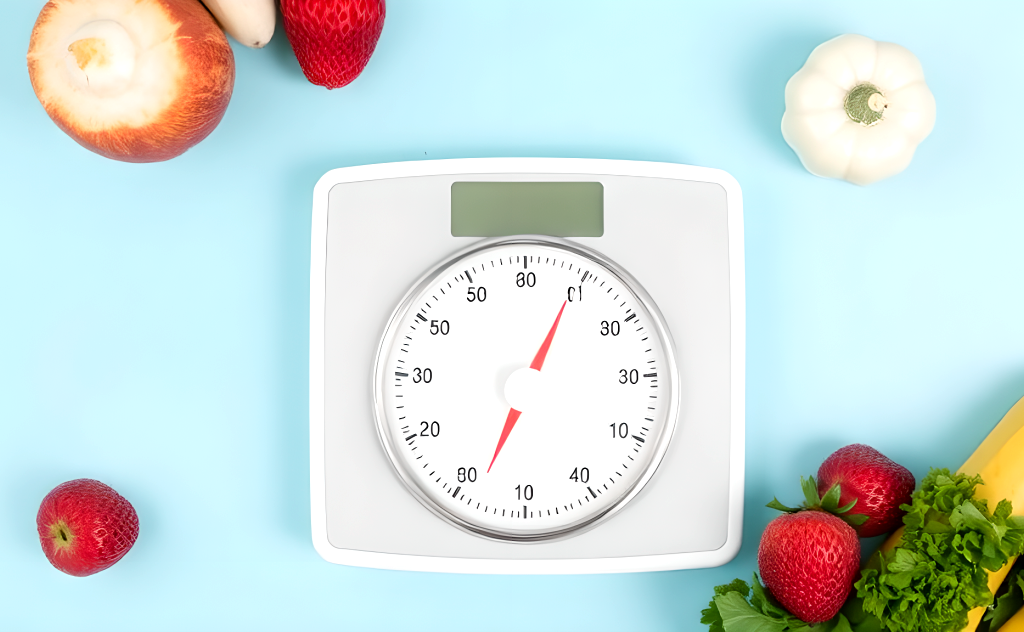Is Your Slow Metabolism Killing You? Try These Life-Changing Hacks Now!
Have you ever felt like your body is working against you? That no matter how carefully you eat or how much you exercise, the scale refuses to budge? You’re not alone. A sluggish metabolism could be secretly sabotaging your health and weight management efforts. In fact, your metabolic rate—the speed at which your body converts food into energy—affects everything from your energy levels to your risk for chronic conditions like type 2 diabetes and heart disease.
But here’s the good news: you don’t need expensive supplements or extreme diets to revitalize your metabolism. Simple, science-backed strategies can increase your metabolic rate by up to 24% in as little as 90 minutes! ✨ From drinking 16 ounces of chilled water first thing in the morning to incorporating metabolism-boosting foods like cinnamon and cayenne pepper, these life-changing hacks can help transform your body into an energy-burning machine. Whether you’re struggling with specific health conditions or simply want to optimize your wellness, understanding and enhancing your metabolism is the key to unlocking sustainable results.
In this comprehensive guide, we’ll explore everything you need to know about supercharging your metabolism—from quick morning boosters and powerful dietary strategies to temperature techniques and tailored approaches for specific health conditions. Get ready to discover how small, strategic changes can lead to remarkable improvements in your metabolic health and overall wellbeing! 🔥

Understanding Your Metabolism
What Is Metabolism and Why It Matters
Metabolism encompasses all biochemical reactions that provide energy necessary for vital processes in living organisms. This intricate system is crucial for growth, movement, and reproduction. At its core, metabolism consists of two main processes: catabolism and anabolism.
Catabolism involves breaking down complex molecules like carbohydrates, lipids, proteins, and nucleic acids into smaller units. This process generates energy and produces thermodynamically reactive molecules such as ATP (adenosine triphosphate). Key catabolic pathways include:
- Glycolysis: Occurs in the cytoplasm, converting glucose into pyruvate
- Tricarboxylic acid (TCA) cycle: Takes place in mitochondria, oxidizing pyruvate to carbon dioxide
- Mitochondrial oxidative phosphorylation: Completes the oxidation process
Anabolism, conversely, involves synthesizing complex biomolecules from simpler precursors. These reactions typically require energy input, often from ATP. Important anabolic pathways include gluconeogenesis, fatty acid synthesis, and the pentose phosphate pathway.
Your metabolism directly impacts your energy levels, weight management, and overall health. When people discuss having a “slow metabolism,” they’re typically referring to a lower basal metabolic rate.
How to Calculate Your Basal Metabolic Rate (BMR)
Your Basal Metabolic Rate (BMR) represents the minimal amount of energy your body needs to maintain vital functions at rest. Various factors influence your BMR, including:
- Age
- Sex
- Health conditions
- Body composition
While the reference content doesn’t provide a specific formula for calculating BMR, understanding that it’s influenced by these factors is essential for assessing your metabolic health. BMR accounts for the energy needed for fundamental processes like:
- Maintaining cellular functions
- Protein synthesis
- Ion transport
- Basic neurological processes
A properly calculated BMR can help you determine appropriate caloric intake and develop strategies to improve metabolic efficiency.
The Connection Between Metabolism and Chronic Health Conditions
Dysfunctions in metabolic pathways can lead to serious health problems. When the balance between energy production and storage is disrupted, various conditions may develop:
-
Diabetes Mellitus: A condition where insulin deficiency leads to abnormal substrate mobilization and altered metabolism. Without proper insulin function, glucose metabolism becomes impaired.
-
Obesity: Can result from metabolic imbalances where energy intake exceeds expenditure over extended periods.
-
Metabolic Syndrome: A cluster of conditions including increased blood pressure, high blood sugar, excess body fat, and abnormal cholesterol levels.
-
G6PD Deficiency: An example of a specific metabolic disorder affecting normal biochemical pathways.
The liver and pancreas play central roles in metabolic health. The pancreas regulates blood glucose through insulin and glucagon secretion, while the liver processes absorbed nutrients and regulates essential metabolic pathways.
Now that we have covered the fundamentals of metabolism and its impact on health, let’s explore practical strategies to jumpstart your metabolism each morning. In the next section, “Quick Morning Metabolism Boosters,” we’ll discover how simple morning routines can significantly enhance your metabolic rate and set you up for all-day energy.

Quick Morning Metabolism Boosters
Now that we understand how metabolism functions in our bodies, let’s explore practical morning routines that can kickstart your metabolic rate. The morning hours are particularly crucial for setting up your metabolic processes for the day, as they align with your body’s natural circadian rhythm which dictates how nutrients are utilized throughout the day.
A. Start With 16 Ounces of Cold Water for a 24% Metabolism Spike
One of the simplest yet most effective morning metabolism hacks is hydration. Drinking 16 ounces of cold water immediately upon waking can boost your metabolic rate by up to 24%. This happens because your body expends energy to warm the cold water to body temperature, creating a thermogenic effect. Additionally, proper hydration is essential for:
- Replenishing fluids lost overnight
- Promoting better digestion throughout the day
- Enhancing skin health and appearance
- Supporting all metabolic processes at the cellular level
This practice is particularly beneficial for those with a sluggish metabolism, as it provides an immediate and measurable boost to your system before you’ve even had breakfast.
B. Add Cinnamon to Regulate Glucose and Feel Fuller
Incorporating cinnamon into your morning routine can significantly improve your metabolic health. This powerful spice helps:
- Regulate blood glucose levels
- Increase feelings of fullness, reducing the likelihood of overeating
- Enhance insulin sensitivity
- Support sustainable energy levels throughout the morning
You can easily add cinnamon to your morning coffee, oatmeal, or yogurt. The glucose-regulating properties of cinnamon are particularly beneficial for maintaining stable energy levels and preventing the mid-morning crash that often leads to unhealthy snacking.
C. Drink Lemon Water to Lower Blood Sugar and Detoxify
Following your initial cold water intake, consider preparing a warm lemon water drink. This simple addition to your morning routine offers multiple metabolic benefits:
- Helps lower blood sugar levels
- Supports the body’s natural detoxification processes
- Provides vitamin C for immune support
- Aids in digestion and nutrient absorption
The citric acid in lemons may also help maintain a healthier pH balance in your body, which supports optimal metabolic function. For maximum benefit, use fresh lemon juice rather than bottled varieties that may contain preservatives or added sugars.
With these quick morning metabolism boosters integrated into your daily routine, you’ll be setting a strong foundation for enhanced metabolic performance throughout the day. These practices align perfectly with your body’s natural rhythms and provide the support needed to overcome a slow metabolism naturally.
In the next section, we’ll explore powerful dietary strategies that complement these morning habits to further enhance your metabolic rate and support long-term metabolic health.
Powerful Dietary Strategies for Enhanced Metabolism
Now that we’ve explored those quick morning metabolism boosters that can jumpstart your day, let’s dive into some powerful dietary strategies that can enhance your metabolism throughout the entire day.

Green Tea: Your 24-Hour Metabolism Enhancer
Green tea stands out as a remarkable metabolism supporter that works around the clock. According to nutritional experts, green tea contains compounds that can slightly increase your metabolic rate. While the effect is modest, consuming green tea regularly as part of your daily routine can contribute to your overall metabolic health. The combination of caffeine and catechins in green tea may help with energy expenditure, making it a simple addition to support your metabolism naturally.

Cayenne Pepper: The Spice That Boosts Metabolism by 15-20%
Cayenne pepper contains capsaicin, a compound that can temporarily boost your metabolic rate. While the reference material doesn’t specifically mention the 15-20% figure, it does acknowledge that certain dietary choices can influence metabolism, albeit in complex ways. Adding cayenne pepper to your meals may provide a modest metabolic boost, but it’s important to understand that this effect alone won’t lead to significant weight loss. Instead, consider it as part of a broader approach to supporting your metabolic health.

High-Protein Foods and Their Thermogenic Effect
High-protein meals can temporarily increase your metabolic rate due to the thermal effect of food, which constitutes about 10 to 15 percent of your total energy expenditure. As noted by registered dietitian Melissa Majumdar, the body expends energy to digest, absorb, and process nutrients, with protein requiring more energy to process than carbohydrates or fats. Including lean protein sources in your meals can help maintain muscle mass, which is crucial since muscle tissue burns more calories than fat tissue, contributing to a higher resting metabolic rate.
Healthy Fats That Support Hormonal Balance and Energy
Consuming healthy fats is essential for hormonal balance and energy production, both of which are integral to metabolic function. The reference material indicates that meals rich in healthy fats enhance satiety, which may help reduce subsequent calorie intake. This is important because insufficient caloric intake can lead the body to utilize muscle for energy, resulting in a slower metabolism due to energy conservation. By including healthy fats in your diet, you support your body’s energy needs while helping to preserve muscle mass.
With these dietary strategies in mind, next we’ll explore how temperature and exercise techniques can further enhance your metabolic health, providing you with a comprehensive approach to addressing a sluggish metabolism.
Temperature and Exercise Techniques for Metabolic Health
Now that we’ve explored powerful dietary strategies to enhance metabolism, let’s dive into how temperature exposure and specific exercise approaches can further revolutionize your metabolic health. These techniques work synergistically with proper nutrition to create a comprehensive approach to boosting your sluggish metabolism.
Cold Exposure Benefits: From Showers to Swimming
Cold exposure has emerged as a powerful tool for activating brown adipose tissue (BAT), a specialized type of fat that burns calories to generate heat. Unlike regular white fat that stores energy, BAT is thermogenic and facilitates energy expenditure, making it a valuable ally in combating slow metabolism.
Research shows that cold exposure effectively enhances:
- BAT activity and function
- Glucose uptake in metabolic tissues
- Lipid metabolism
- Mitochondrial function
- Insulin sensitivity
Cold therapy works primarily by triggering pathways that increase thermogenic capacity. Whether through cold showers, ice baths, or winter swimming, exposing your body to lower temperatures promotes remodeling of lipid profiles within BAT, enhancing its calorie-burning potential. This metabolic boost can persist even after the cold exposure ends, providing lasting benefits for those struggling with sluggish metabolism.
Building Muscle as a Long-Term Metabolism Strategy
While cold exposure offers immediate metabolic benefits, building muscle provides a sustainable, long-term strategy for enhancing metabolic rate. Muscle tissue is metabolically active, requiring more energy at rest than fat tissue.

The relationship between exercise and BAT is complex. Unlike cold exposure, which directly activates BAT, exercise influences metabolism through multiple pathways:
- Reduction of lipid accumulation in adipose tissue
- Release of beneficial “batokines” (signaling factors) such as 12,13-diHOME and FGF21
- Potential “beiging” of white adipose tissue into more metabolically active brown-like adipocytes
Though research shows exercise may temporarily reduce BAT glucose uptake (as active muscles compete for glucose during workouts), the overall metabolic benefits of resistance training far outweigh this temporary effect.
HIIT Workouts That Elevate Metabolism for Up to 48 Hours
High-Intensity Interval Training (HIIT) stands out as one of the most effective exercise protocols for combating slow metabolism. HIIT involves alternating between brief, intense activity bursts and recovery periods, creating a metabolic environment that continues to burn calories long after your workout ends.
HIIT’s impressive metabolic effects include:
- Extended calorie burning for up to 48 hours post-workout
- Enhanced release of metabolic signaling factors
- Improved insulin sensitivity
- Increased energy expenditure compared to steady-state exercise
Similar to cold exposure, HIIT workouts may increase levels of important batokines, though through different mechanisms. This suggests a complex interplay between energy regulation systems during high-intensity exercise that ultimately benefits metabolic health.
With these temperature and exercise techniques in your metabolic toolkit, you’re well-equipped to combat a sluggish metabolism. In the next section, we’ll explore how to adapt these strategies for specific health conditions that might be affecting your metabolic rate, ensuring everyone can find an approach that works for their unique situation.
Metabolism Support for Specific Health Conditions
Now that we’ve explored temperature and exercise techniques to boost your metabolic rate, it’s important to address how metabolism affects—and is affected by—specific health conditions. For those managing chronic health issues, metabolic support requires tailored approaches.
Metabolism Optimization for Type 2 Diabetes
Type 2 diabetes fundamentally affects metabolism through disruptions in insulin production and utilization. This common metabolic disorder often stems from lifestyle factors, though genetic components can play a role. Symptoms like frequent urination, increased thirst, and blurred vision signal metabolic imbalance.
For those with diabetes looking to improve their sluggish metabolism:
- Focus on consistent blood sugar management through balanced meals
- Incorporate metabolism-boosting foods that have a low glycemic index
- Time your meals strategically to support insulin sensitivity
- Consider strength training to improve glucose uptake in muscles
- Work with healthcare providers to adjust medication if needed
Remember that metabolic improvements for diabetics must always prioritize blood sugar stability while working toward increased metabolic efficiency.
Metabolic Approaches for Chronic Inflammatory Conditions
Chronic inflammatory conditions often coincide with metabolic disorders. Conditions like Gaucher Disease, Wilson’s Disease, and various autoimmune disorders can both affect and be affected by metabolic function.
Key metabolic support strategies for inflammatory conditions include:
- Identifying and addressing specific metabolic components (amino acids, carbohydrates, lipids, or proteins) that may be imbalanced
- Supporting mitochondrial function through targeted nutrition
- Reducing inflammatory triggers that may further compromise metabolic pathways
- Considering enzyme therapies when appropriate (such as for Gaucher Disease)
- Implementing dietary modifications tailored to the specific condition
For conditions involving accumulation of substances (like copper in Wilson’s Disease), early metabolic intervention through proper medical treatment can prevent serious health consequences.
Finding Community Support for Your Metabolic Health Journey
Navigating metabolic health challenges is easier with support. Whether you’re dealing with a diagnosed metabolic disorder or working to fix a naturally sluggish metabolism, community resources can provide valuable guidance.
Beneficial community support options include:

- Online forums for specific metabolic conditions
- Local support groups for diabetes and metabolic syndrome
- Telehealth options for connecting with metabolic health specialists
- Peer-led accountability groups for maintaining lifestyle changes
- Educational resources through medical institutions specializing in metabolic health
While at-home testing can provide initial insights into hormonal and metabolic markers, remember that definitive diagnosis and treatment plans should come from qualified healthcare providers. Community support should complement, not replace, proper medical care for metabolic health conditions.
Your metabolic health isn’t just about weight management—it’s a cornerstone of your overall wellbeing. From morning rituals like drinking 16 ounces of cold water for a 24% metabolism boost to incorporating metabolism-friendly foods like cinnamon, green tea, and cayenne pepper, small daily changes can yield significant results. Temperature manipulation through cold exposure, muscle-building activities, protein-rich meals, and HIIT workouts all contribute to a more efficient metabolic system that serves you throughout the day.
Remember that metabolic health looks different for everyone, especially those managing specific health conditions like type 2 diabetes or chronic kidney disease. The strategies outlined in this guide can be adapted to your unique circumstances with proper guidance from healthcare professionals. By implementing these evidence-based techniques consistently, you’re not just addressing a “slow metabolism”—you’re investing in sustained energy, hormonal balance, and long-term health. Take the first step today by choosing one metabolism-boosting hack to incorporate into your routine, then gradually build your personalized approach to metabolic wellness.

